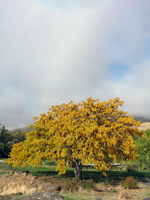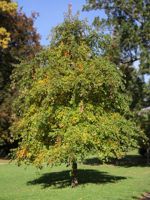Mon-Fri 9am - 5pm Mountain time
Thornless Honeylocust vs Black Gum
Gleditsia triacanthos inermis
Nyssa sylvatica
NOT AVAILABLE THIS SEASON - MIGHT RETURN
Thornless Honey Locust makes an excellent shade tree with its lacy foliage and dappled shade. The leaves are honey-yellow, light and airy, providing interesting color and texture to your landscape. This variety is thornless, and the seeds and pods provide food for wildlife such as deer and squirrels.
The Thornless Honey Locust is tolerant of drought, various soil conditions, and even road salt.
Black Gum is a slow-growing ornamental shade tree with a dense pyramidal shape. The foliage is dark green in the summer, and transitions to bright fall colours which include red, orange, purple, and gold. It is commonly used as an ornamental tree in parks and large gardens as a specimen or shade tree.
The small greenish white flowers provide nectar for bees and black tupelo honey is a sought after flavour. The small dark blue fruits which ripen in late summer will attract birds and other animals to your yard. The fruits are edible, but very sour, and are primarily used for pies, flavouring, and drinks. Plant the Black Gum where it will live long-term, as it has a large taproot and does not transplant well.

